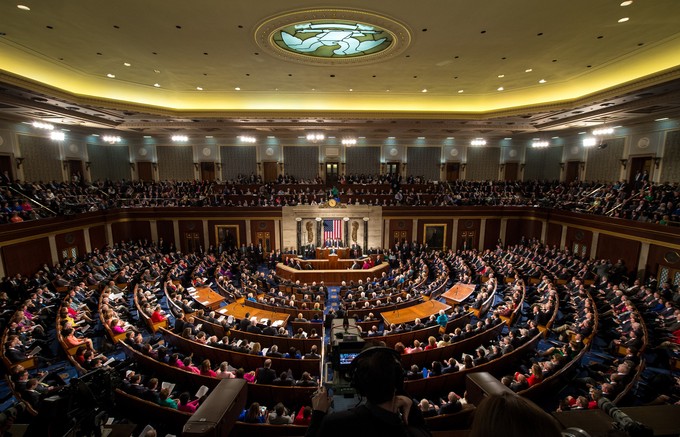What You Need to Know about the President’s Tax Plan
By
Jasmine Tucker
Posted:
|
Social Insurance, Earned Benefits, & Safety Net,
Taxes & Revenue

2015 State of the Union Address/Photo courtesy of NASA
About a week and a half ago, the White House released a plan to “simplify our complex tax code” and “make it fairer by eliminating some of the biggest loopholes.” The president alluded to some of the changes he’d like to make in the tax code in last week’s State of the Union address. Here we provide a brief overview of what loopholes he’d like to close and what he wants to do with the money.
Raises $320 Billion in New Revenues Over Ten Years
The president’s tax plan proposes to raise new revenues in two major ways: closing loopholes around the capital gains tax, and imposing new fees on big financial institutions that borrow excessively.
Capital gains are income earned from real estate, stocks or other investments. Our tax code treats income from capital gains differently than other types of income – like paychecks – by taxing it at a lower rate. The vast majority of the capital gains tax break is enjoyed by the top 1% of earners.
The president’s tax plan proposes to make two changes to the capital gains tax in order to raise about $210 billion over ten years. The changes would almost exclusively impact the top 1% of earners:
- Close the “trust fund loophole” which would apply the capital gains tax to stocks and bonds that wealthy individuals leave behind to their heirs when they die; and
- Raise the top capital gains tax rate to 28% -- or the top rate under President Reagan.
The president’s tax plan would also impose a fee on the biggest financial institutions when they take big risks by engaging in “excessive borrowing,” which could raise about $110 billion over ten years.
Invests in Middle Class Families
The president’s plan doesn’t just raise taxes. It proposes to use the additional revenue to make investments to “help middle class families get ahead.” It would spend a vast majority of the newly raised $320 billion to:
- Provide a new $500 second earner tax credit to 24 million families in which both spouses work.
- Expand child care tax benefits to 5.1 million families.
- Improve the American Opportunity Tax Credit by providing more students with up to $2,500 per year towards a college education.
- Automatically enroll Americans without access to a workplace retirement plan in an Individual Retirement Arrangement (IRA) plan.
These are controversial proposals, and lawmakers in Congress are likely to come up with other plans. For more about President Obama’s vision on where we should invest over the next year and beyond, stay tuned next week when the president’s budget request is released. We’ll be bringing you an in-depth analysis of the key aspects of this tax plan and myriad other federal budget issues.